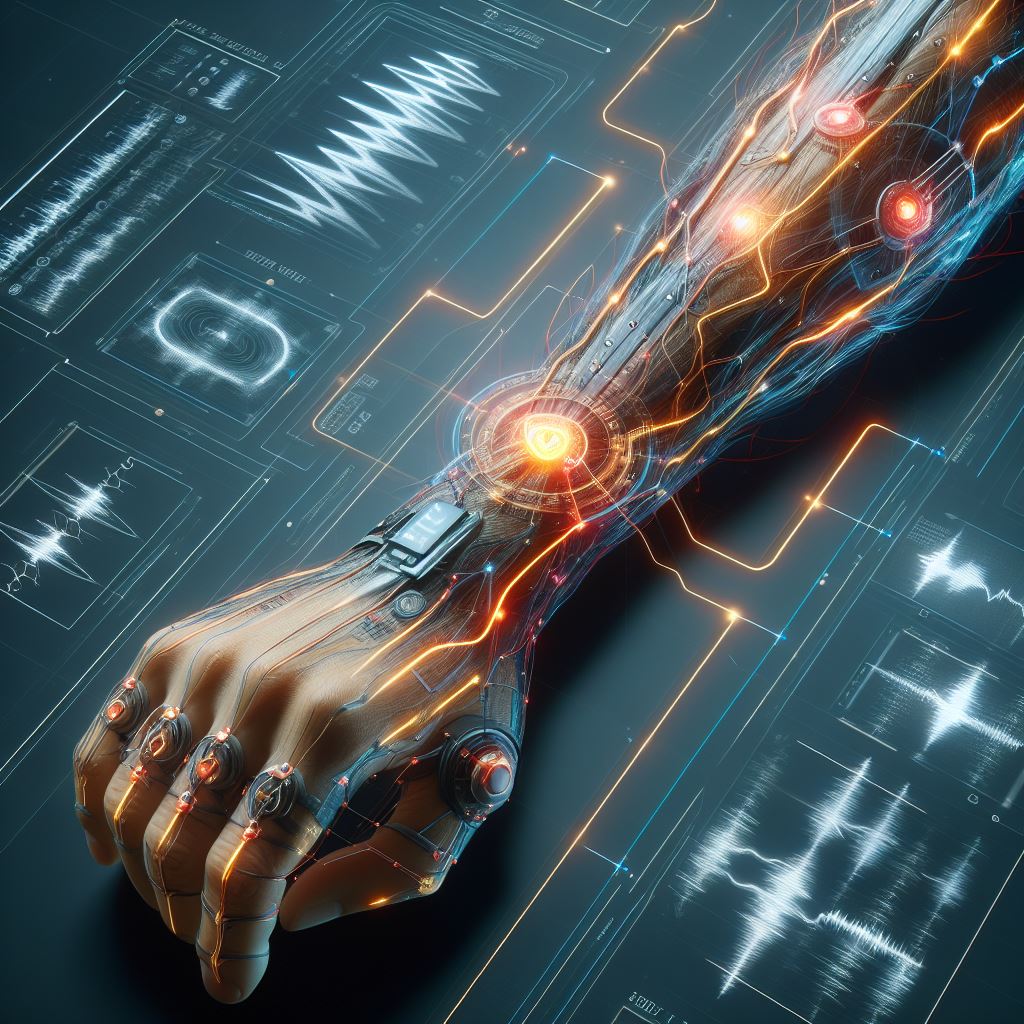
Imagine a world where understanding your muscles goes beyond electrifying readings. A world where tiny sensors decode the whispers of your contractions, revealing a symphony of movement unlike anything we’ve known before. This is the future of biomechanics, powered by the incredible Mechano Myogram (MMG) sensor technology, and Robo Bionics, a national startup award-winning company, is leading the charge.
Forget those prickly EMG electrodes – MMG takes a different approach. Instead of capturing electrical signals, MMG sensors detect the subtle vibrations your muscles produce as they contract. These vibrations, like whispers in the language of motion, tell a deeper story that EMG often misses.
So, why is MMG such a game-changer? Let’s break down the advantages:
- Deeper Insights: MMG can penetrate deeper tissues, reaching muscles EMG struggles to access. This makes it ideal for monitoring spinal cord injuries, core muscles, and even muscles behind bones.
- Noisy Nonsense? Not Here: Remember the static and interference that can plague EMG? MMG’s vibration-based signal is remarkably resilient to noise, providing cleaner, more accurate readings.
- Effortless Ease: No gels, no skin prep – MMG sensors stick on with gentle pressure. This makes them comfortable and convenient, perfect for long-term monitoring and real-world applications.
- Beyond the Lab: EMG often stays confined to controlled environments. MMG’s non-invasive nature makes it ideal for real-time feedback during sports, rehabilitation, and even prosthetics control.
But Robo Bionics isn’t just talking the talk – they’re walking the walk with cutting-edge MMG sensor research and development. They focus on creating miniaturized, wearable sensors that seamlessly integrate into our lives. Imagine athletes fine-tuning their movements in real-time, stroke survivors rediscovering control, or amputees feeling the phantom limbs move as they wish. This is the future Robo Bionics is building, one tiny vibration at a time.
And Robo Bionics isn’t the only one listening to the language of muscle. Reputed research institutions around the world are exploring the potential of MMG:
- MIT Media Lab: Developing MMG-based prosthetics that mimic natural muscle movement.
- Carnegie Mellon University: Using MMG to understand and improve robot-human interaction.
- University of California, San Diego: Exploring MMG for early detection of muscle fatigue and injury.
The field of MMG is still young, but the whispers are growing louder. With its inherent advantages and potential applications, MMG is poised to revolutionize the way we understand and interact with our bodies. At the forefront of this revolution stands Robo Bionics, whispering the future of biomechanics into existence.
This blog post is just a glimpse into the fascinating world of MMG. Stay tuned for further updates on Robo Bionics’ groundbreaking research and the exciting future of this transformative technology. Let’s all start listening to the whispers of our muscles – they might just have the most incredible stories to tell.

Grippy by Robo Bionics is one such Bionic Hand that incorporates Sensory Feedback through Haptic Technology with MMG Control. Another Unique Proposition that Robo Bionics has to offer is its seamless booking system, where you can schedule appointments and even request a pick-up and drop facility and check-out stays near the Clinic to ensure that your experience is made comfortable
Keywords: Sensory feedback, prosthetics, rehabilitation technology, mobility, independence, neural interfaces, haptic technology, myoelectric control, artificial limbs, brain-machine interfaces, amputation, spinal cord injury


